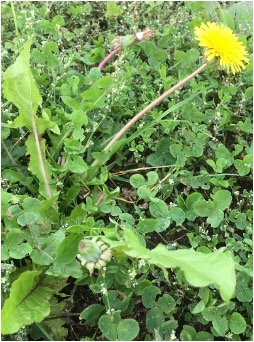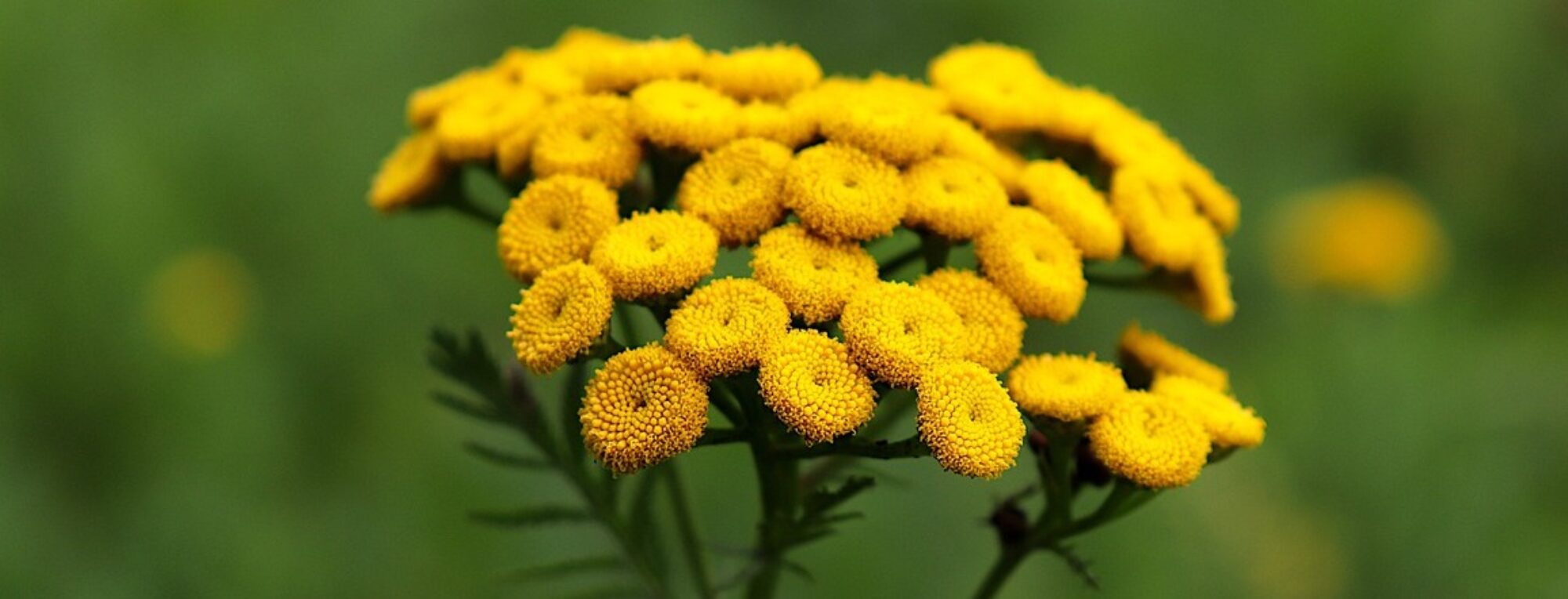
English name: Common dandelion
Family: Asteraceae
Botanical characteristic: Perennial herb, 10 – 20 cm tall. The root is spindle-shaped, fleshy, milky. The leaves form a ground rosette, are pinnately divided, entire-margined and sparsely toothed. The stem is hollow, cylindrical, and topped with a raceme of yellow tongue-shaped flowers. The fruit is an achene with a pedicel.
Microscopic drawing:


Distribution: It grows in meadows, pastures, fields, gardens, roadsides. Widespread from the lowlands to the foothills.
Drug: Taraxaci officinalis radix, Taraxaci radix cum herba
Harvesting method: The root is collected from April to May by carving, without damage. The root with the cloves is collected before flowering by digging.
Drying: After cleaning, the root is dried naturally in one layer, in the shade. Artificially in a dryer up to 50 °C. The dried root breaks when bent and is white in color.
Active substances: The drug contains minerals from the group of eudesmanolides and germacranolides. The best known germacranolide is taraxacin. The root also contains mucilage, carbohydrates, inulin (40 %), flavonoids, sterols (taraxasterol) and potassium salts.
Uses: The bitters contained in dandelion support the secretion of digestive juices, thereby stimulating digestion and increasing appetite. The drug has diuretic properties and is said to help lower blood sugar levels.
Traditional method of use in indications determined solely on the basis of long-term use:
– relief of symptoms related to mild indigestion, feeling of abdominal fullness, flatulence and slow digestion,
– supportive treatment for temporary loss of appetite,
– increased diuresis in urinary tract diseases.
Selected herbal preparations: AGROKARPATY COMMON DANDELION herbal tea 1×30 g, AGROKARPATY CLEANSING HERBAL tea 1×50 g, APOTHEKE HERBAL TEA FOR GALLBLADDER AND PANCREAS 20×1.5 g, FYTO Herbal Mixture for Elevated Uric Acid 20×1.25 g, Dr.Max Blood Sugar Level herbal mixture, infusion bags 20×1.5 g, Astina LYMFEX capsules 60 pcs, Gastroval + capsules 15 pcs, Calendula Cynarofit drops 25 ml, Dr.Svatek HERBAL SYRUP FOR DIGESTION 250 ml.
